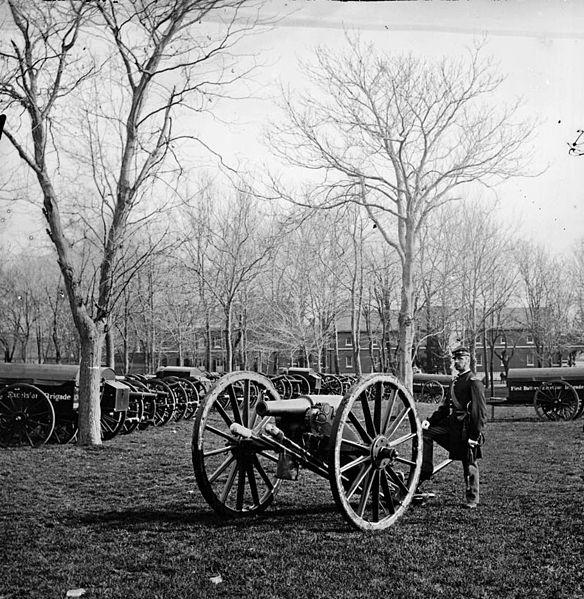In the middle of the 1850s, there were many photographers, whose projects caused people’s admiration, and the works of Edouard Baldus, Imperial Library of the Louvre, and Roger Fenton, Rievaulx Abbey, may be considered as the most powerful examples of photography that was practiced between the 1850s and the 1860s. In both projects, the photographs use the eye-level camera angle that is removed from the subject to provide the viewer with a possibility to look at the buildings as they are.
Both photographs seem to be neutral so that it is possible to analyze the essence of the buildings relying on a true visual picture only. Still, in comparison to Baldus’ photograph, where no light effects are used, the photograph of Fenton is characterized by numerous shadows that are located at different places. Such choice of light may mean that Imperial Library of the Louvre is a powerful building with a number of missions and goals that serve people as a supportive and helpful means, and Rievaulx Abbey is the place, where a number of uncertain and unpredictable events may happen because of that tiny connection between nature and the building.
Besides, the presence of horizontal and vertical lines on Baldus’ photograph says about the stability that is inherent to that building, and a variety of forms underlined by Fenton may explain the mess that could happen in that abbey. If there are no properly identified shapes in Baldus’ work, the work by Fenton is full of shapes that may involve the view to the surroundings of the picture. In general, though both pictures were made almost at the same period of time and from the almost same foreshortening, the effects of Fenton’s and Baldus’ works are rather different.
Essay Two: Documentary Photography


During the American Civil War, the idea of sharp-focus documentary photography was developed by many photographs, who brought stereographic cameras to the field of the fight (Marien 84) to capture a certain moment of reality and share it with the viewer. Union Soldier by Mathew Brady and The Harvest of Death by Timothy H. O’Sullivan are the two powerful examples of documentary photography that was offered during the Civil War that prove the presence of several technological limitations and show the photographs’ intentions to overcome the challenges and demonstrate the truthfulness and staging of what was happening at that period.
The limitations of documentary photography were connected with the necessity to move with cameras and all their supplementary material and the development of new techniques that were used for copying photographs and the creation of not clear projects. Besides, the limitations of the medium, the business demands, and the photo goals made photographs developed their styles. To overcome the challenges, such photographs as O’Sullivan tried to create straight-on images without any possible tilting of the camera and provided the viewer with a picture free from any authorial interventions or adjustments.
A documentary photo was created not for narration or explanations that could be offered by a photographer but for the demonstration of true events. The photographs preferred to take pictures distantly and cover the power of the field where many people died or were injured. O’Sullivan’s and Brady’s works show not only the depths of war but also new approaches to taking photos under not appropriate outside conditions.
Work Cited
Marien, Mary, Warner. Photography: A Cultural History. London, UK: Laurence King Publishing, 2006. Print.